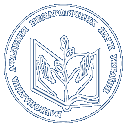- Бєльська, Н.А. (orcid.org/0000-0003-0697-3973) (2018) Possibilities of Applying the Miers-Briggs Type Indicator Indicator (MBTI) in Professional orientation of high school students Освіта та розвиток обдарованої особистості, 2 (69). pp. 34-38. ISSN 2309 ‑3935
|
Text
08.pdf Download (436kB) | Preview |
Abstract
The article presents the results of a study of the relations between the typology by C. G. Jung (Myers-Briggs type indicator) and the personal-professional typology by J. Holland. It is established that psychological functions (sense – intuition, thinking – feeling, judgment – perception) and setting of consciousness (extraversion – introversion) influence the choice of profession. Intuitive and perceptual types are focused on intellectual and artistic fields of activity; extraverted, sensory and judging persons tend to social, conventional and entrepreneurial professions. Representatives of feeling types are oriented toward artistic and social professions, thinking types prefer conventional and entrepreneurial spheres of activity. In addition, the connections between professional preferences and typology of temperament by D. Keirsey were revealed ("the Artisan", "the Guardian’", "the Idealist", and "the Rational"), namely: 1) representatives of SP-temperament ("the Artisan") significantly more often than other temperaments choose a realistic sphere; 2) representatives of NF-temperament ("the Idealist") are more focused on artistic professions than on conventional and entrepreneurial professions; 3) NF- and NT-temperaments ("the Rational") are more interested in intellectual activities than SJ ("the Guardian") and SP-types. Comparative analysis of professional preferences of sensory and intuitive temperaments revealed: 1) SPtemperament has more practical-realistic and less social orientation than SJ-group; 2) NT-temperament has more emphatic ambition, conventionality and penchant to management and, at the same time, less pronounced creativity than representatives of NF-group. The obtained data confirm the prognostic possibilities of the Myers-Briggs indicator in vocational guidance work with high school students.
Downloads
Downloads per month over past year
Actions (login required)
 |
View Item |




